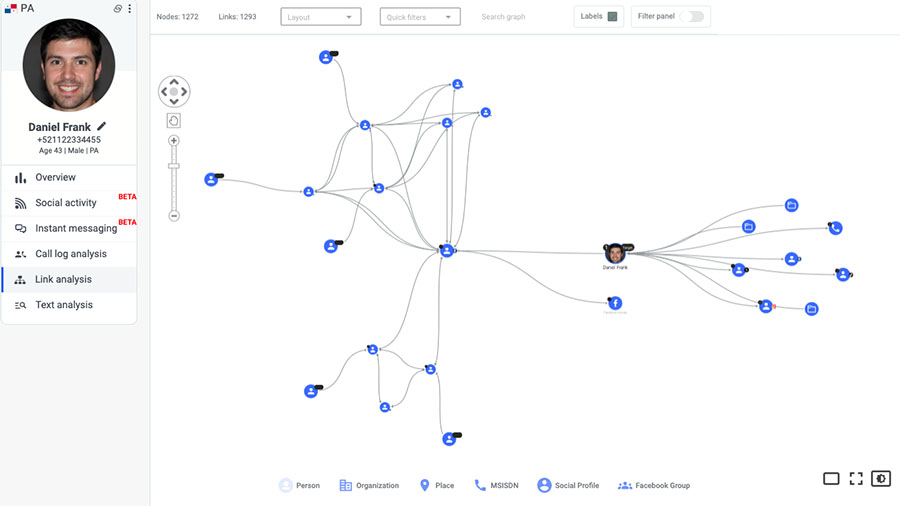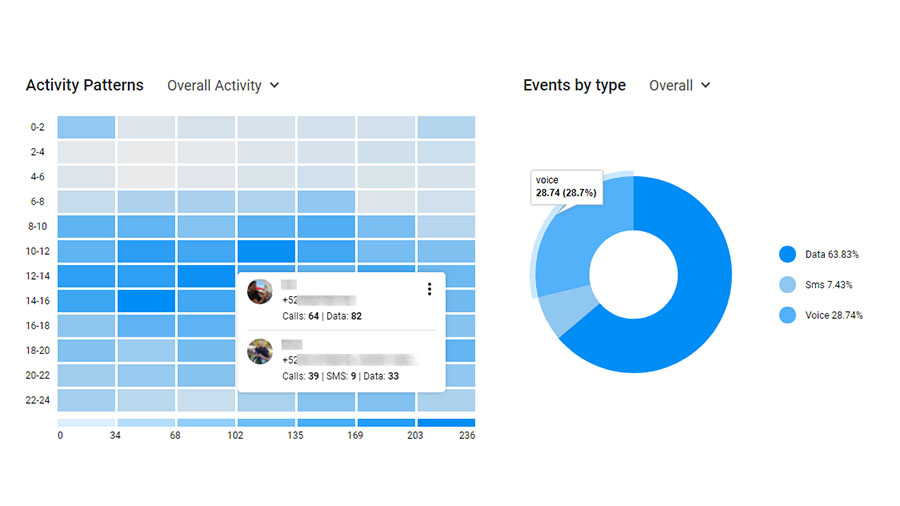Homicide Case Study
Using Data Fusion to solve homicide cases
Transforming an Investigation through Call Data Records and Forensic Data
Introduction
A State-level agency faced a complicated homicide case. A prominent businessman was found dead in his home under mysterious circumstances. The case presented complex challenges, with limited leads and a lack of clear motive or suspect.
The Challenge
The State-level agency tasked with solving this high-profile case initially relied on traditional investigation methods. These included canvassing the area, interviewing potential witnesses, and collecting physical evidence from the crime scene. However, these methods produced little actionable information.
The lack of digital forensic expertise and modern investigative tools led to a slow investigation.

Combining Forensics and CDR data
The State-level agency decided to use Intellectus in their investigation. Allowing them to analyse communication patterns and movements of potential suspects through their mobile phone activities. The process involved the following steps:

Analysing Call Records
The team analysed the CDRs of initial suspects, focusing on the time frame around the murder. They aimed to identify unusual patterns or contacts linked to the victim.

Finding Call Patterns
Visualising call patterns, frequencies, and locations of the calls made to and from the victim’s phone provided insights into the victim’s social circle and routine movements.

Forensic Analysis
Using existing forensic tools to extract data from the victim’s phone they fused it with their findings, showing a timeline of the victim’s frequent places and activities.

Profiling Connections
With the information loaded, they began profiling and mapping connections between the victim and unknown contacts, revealing previously unnoticed relationships.

Location predictions
By correlating call timings and cell tower information, the team was able to trace the movements of key suspects, narrowing down the list of potential perpetrators.

Pattern Recognition
The system identified anomalies in call patterns, such as frequent late-night calls between the victim and an unknown number of days before the murder and other unknown phone numbers.
Getting Results
The CDR analysis led to a breakthrough. The unknown number was traced to a former business partner of the victim. Further investigation revealed a motive rooted in a financial dispute.
Upon confrontation with the evidence gathered through the CDR analysis, the suspect was apprehended and confessed to the crime. This led to a successful prosecution. The analysis of all this data was instrumental in providing concrete proof of the suspect’s involvement and movements during the critical time frame of the murder.

Conclusion
This case study showcases the power of digital forensics and advanced data analytics in solving complex criminal cases.
The successful resolution of the homicide case not only brought justice to the victim but also highlighted the need for modern investigative tools in law enforcement’s arsenal.
Book a demo
Experience how Intellectus helps agencies solve cases faster, with a live demo from our team.
